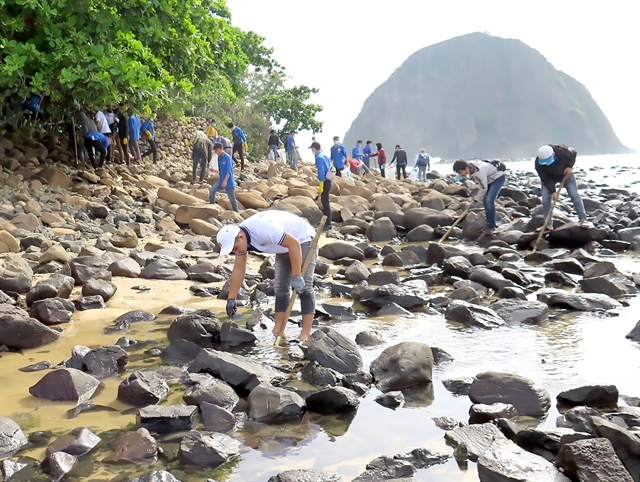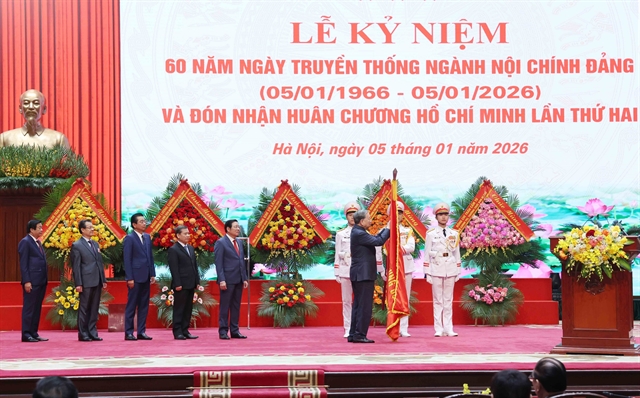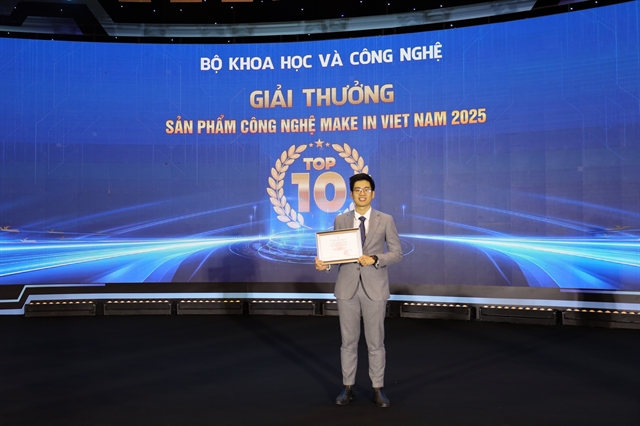 Environment
Environment

 |
| Young people clean up the environment in the Hòn Yến wetlands area in the southern province of Phú Yên. VNA/VNS Photo |
PHÚ YÊN — Local communities in An Hòa Commune, Tuy An District of the southern province of Phú Yên have been making changes to conserve the Hòn Yến wetlands while still improving their livelihoods through sustainable economic development.
From August 2020 to September 2022, the Global Environment Fund–Small Grants Programme in Việt Nam under the United Nations Development Program (GEF SGP/UNDP) supported Phú Yên province in strengthening the capacity of local communities to conserve the Hòn Yến wetlands.
Huỳnh Văn Dũng, Vice Chairman of the province’s Farmers Association, said that the most important goal of this project is to raise community awareness and capacity in managing and exploiting marine resources and protecting ecosystems.
In particular, people are empowered to manage and protect the environment, and protect the Hòn Yến coral ecosystem, he said.
The project’s total funding is nearly VNĐ3.2 billion, of which nearly VNĐ1.1 billion came from GEF SGP/UNDP, VNĐ900 million from the Việt Nam - Russia Tropical Centre under the Ministry of National Defence and about VNĐ1.2 billion from Phú Yên Province’s own budget.
Hòn Yến wetlands, located in Nhơn Hội village, An Hoa Commune, is a diversified ecosystem both in the water and on land. Its coral reef ecosystem is very diverse and rich with 17 species distributed over an area of about 12.71ha. The colourful corals have become a unique symbol for Phú Yên Province.
However, the area has suffered from environmental pollution as local people and tourists threw garbage in it. Untreated waste from aquaculture businesses were discharged directly into the marine environment. In addition, like other coastal localities in the central region, Hòn Yến is affected by climate change and rising sea levels which have degraded the quality of marine ecosystems and resources. Many coral reefs have been damaged.
To curb the situation, the Hòn Yến Phú Yên project launched communication campaigns and training sessions to provide basic knowledge on marine resource management, marine environmental protection, the benefits of conservation and sustainable exploitation of ecosystems.
About 1,025 households in Nhơn Hội and Hội Sơn villages in Hòa An Commune received the training.
Phạm Đình Long from Nhơn Hội village said that local residents first found it inconvenient and uncomfortable when being told what to do.
However, once they understood, they gradually changed their thinking and behaviour.
“Now people in the village tell each other not to throw garbage into the sea and they reduce plastic bags/single-use plastic,” he said.
They also classify waste at the source, planted hundreds of trees to create landscapes and piloted a worm farming project to treat organic waste.
Huỳnh Vũ Minh, Vice Chairman of An Hòa Hải Commune People's Committee, said that previously, people living near Hòn Yến usually threw garbage into the sea but now, they stopped doing so.
“The environment and sea water in Hòn Yến has gradually become green, clean and beautiful again,” he said.
To promote community participation in monitoring and protecting the environment and coral reefs, the project empowered the community to manage and protect coral ecosystems.
Through a model of a "co-operative group" with specific operating regulations under the support of local authorities, local people joined in managing and protecting coral reef/ fishery resources and exploiting the unique tourism strengths of Hòn Yến.
With many years of experience working in nature conservation, Dr. Chu Mạnh Trinh from Cù Lao Chàm Marine Protected Area Management Board said that Hòn Yến coral reefs and sea nurtured fish and shrimp resources and even tiny lobsters.
“Hòn Yến coral reef ecosystem belongs to the community and only the community can truly bring the reef back to life,” he said.
The People's Committee of Tuy An District initially allowed the co-operative group to manage and protect 2.87ha. The participating members are entitled to exploit aquatic resources in the area, patrolling and protecting corals and fisheries as well as preventing violations.
Through the supervision and protection of the community, tourists can visit Hòn Yến by boat or canoe, so the coral reefs are no longer trampled. For the long-term conservation of coral reefs, local people moved 20ha of shrimp breeding so that the shrimp farms are at least 400m from the shore and over six metres in depth.
A member of the co-operative group, Dương Ngọc Thắng, said that in the past, people used to go back and forth on this coral reef every day, but no one thought of having to protect it.
Now they voluntarily participate in the protection of coral reefs as they understand that the coral reef is a valuable gift that nature provides humans and it needs to be protected.
“Keeping the beauty of coral and the environment in Hòn Yến secures their livelihood,” Thắng said.
Under the Hòn Yến Phú Yên project, 30 local households were supported to implement new livelihood models in the direction of community-based tourism, production of biological detergents, natural aquaculture or fishing models or a model of coral culturing.
According to Trần Đình Luân, Director of the General Department of Fisheries under the Ministry of Agriculture and Rural Development, the conservation of the coral ecosystem of Hòn Yến is associated with a new rural development programme: building new livelihood models such as rural tourism and craft village tourism.
The combination could help integrate various resources to accomplish the conservation and diversity of marine life. From here, the residential community can maximise the economic value of the very specific local ecosystem, Luân said.
“The conservation of Hòn Yến coral ecosystem diversity in association with tourism will contribute to building a local image and highlight the beauty of Việt Nam’s sea,” he said.
Research results of the Việt Nam - Russia Tropical Centre have recorded 22 coral species belonging to seven families at Hòn Yến. Many species are only recorded in the waters of Phú Yên Province, typically, soft corals of the Alcyoniidae family and corals of the top hole (genus Lobophytum). Because of this unique value, experts have conducted many studies to establish conservation areas and protect the ecosystem in Phú Yên.
According to Lieutenant Colonel Dr. Hoàng Thị Thùy Dương from Việt Nam-Russia Tropical Centre, previously Hòn Yến coral reefs were negatively affected by natural factors (sea storms) and by humans, for example, environmental pollution, trampling, or fishing.
The Hòn Yến Phú Yên project, which has been implemented for the past two years, has promptly curbed this deterioration, Dương said.
“It is necessary to continue to have the synchronous participation of scientists, local authorities and the community to further preserve the coral reef,” she said. — VNS




